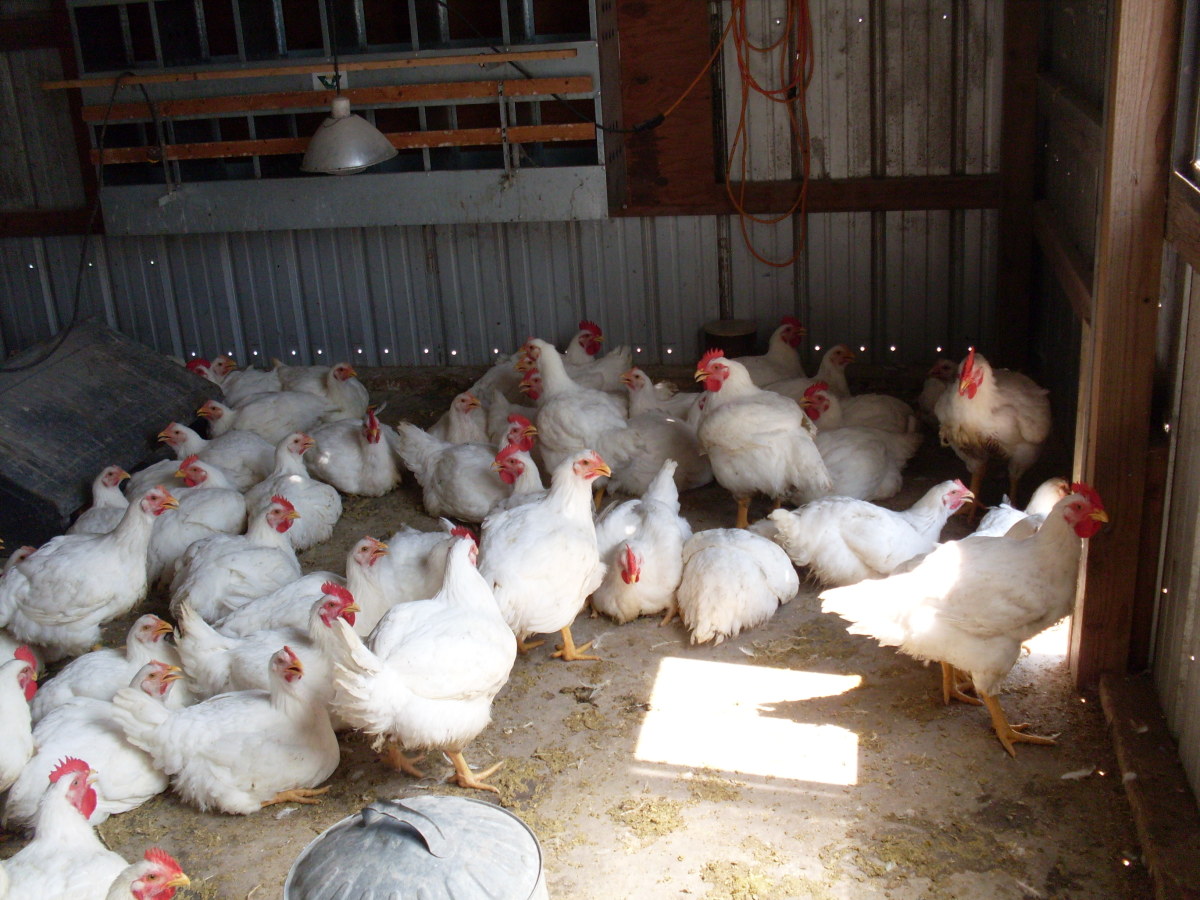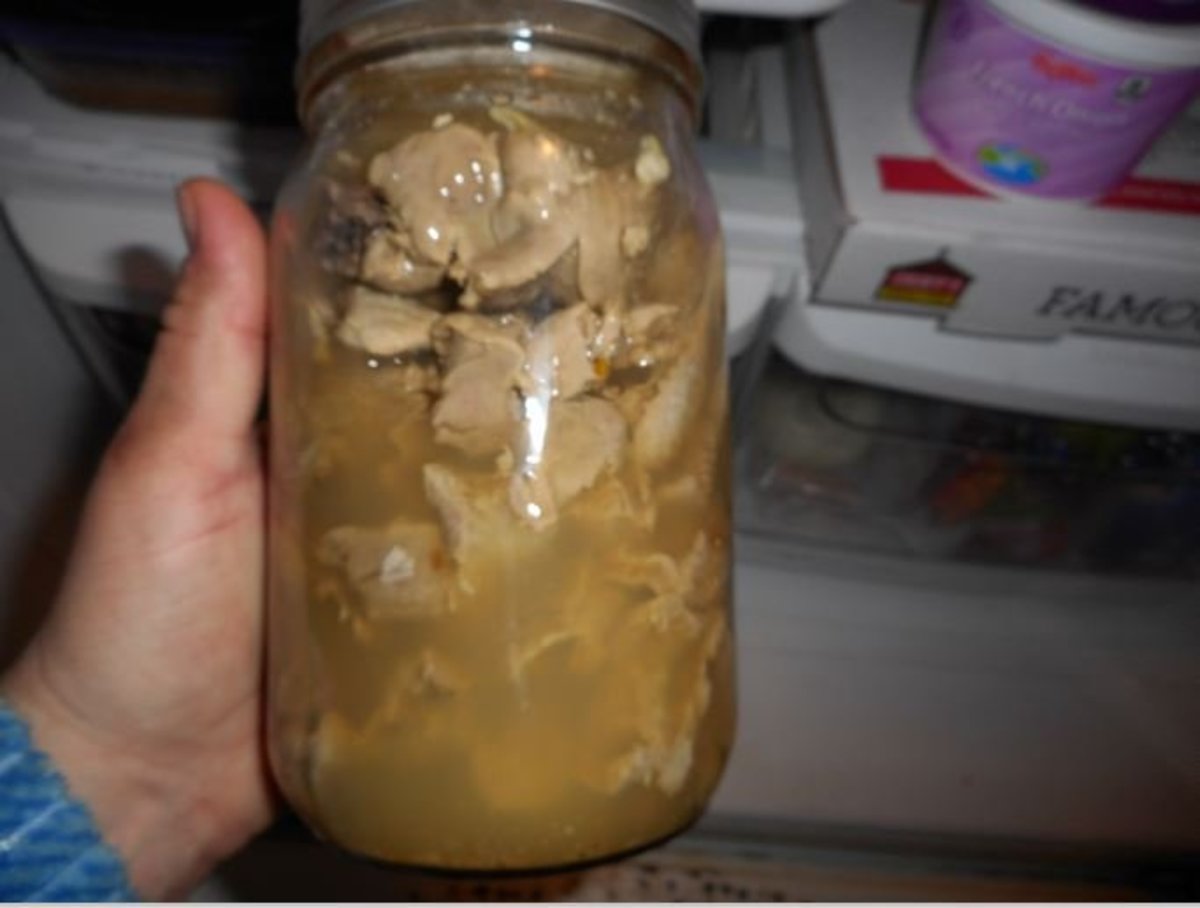8 Questionable Ingredients in Everyday Products You May Not Be Aware Of
I'm not a scientist. I'm just an average person, like most people, who buy 95% of the food I eat from the grocery store, along with other products. For one huge reason I stopped eating fast food completely a few years ago, and with that change came many others. The funny thing is, I didn't consider myself one of those people who constantly ate fast food. Every now and then I went by the regular haunts--Zaxby's, Wendy's, Burger King, Hardee's, Sonic, and Taco Bell--that I considered to be my favorites. Of course, that doesn't mean I didn't stop by any of the others. However, looking at them typed out like that up there does seem like quite a lot...but, as I said, I didn't consider myself a fast food junkie, same as most other people probably don't. There were certain things I didn't eat for different reasons, but until I got my head out of the sand I didn't realize how much odd ingredients were used in some of the most common things.
For years I heard people use the saying, "If I can't pronounce it, I'm not going to eat it." I thought of them as fanatics. In this day and age I wasn't going to give myself a headache trying to figure out what was in the things I used because I considered it a waste of time. Unless it was something that was possibly going to give me cancer and if it sounded absolutely crazy, then I steered clear of it. But when I found that it took months (about 4-6, I'd say) before I stopped craving fast food I figured that there maybe something to that analogy of trying to know exactly what it was you were eating and using on your body and within your home.
As I said, I'm not a scientist. If there is anything listed that YOU question the validity of, look it up for yourself. I don't make the ingredients that these people put in some of the things I mention, I'm not sure how they make them, and to be honest, I don't want to know how they do it because it just seems disgusting. Or weird. Or both.
1) Formaldehyde in Air Fresheners
Whenever you spray air fresheners around your space and it seems as if the aroma dissipated just as fast as you sprayed it, it's not your imagination, it's the fact that the formaldehyde in it is assaulting and killing your senses when you breathe it in. Oh yes, you know what else formaldehyde is used in? DEAD BODIES TO PERSERVE THEM! This has been a little PSA.
According to epa.gov, "There are four basic ingredients in air fresheners: formaldehyde, petroleum distillates, p- dichlorobenzene, and aerosol propellants.”
I actually heard about this one years ago, when I was still in high school, and I thought it was weird enough to share.
And you know what they say about sharing...it means caring.
2) Pork in Oil of Olay products
Pork isn't in all Oil of Olay products, but watch out for the products containing ingredients like glycerin. Whenever a synthetic plant source isn't available for use, they use animal substitutes. Raw bacon...*ahem*...pork, is just the cheapest and most readily available source.
I actually called the number on the bottle of Oil of Olay to ask specifically about this product, and you can do the same. By law, they're required to divulge that information to the public even though some companies do find loopholes and refuse to publicly acknowledge what they use in their products when they don't want to (for fear their sales will drop; understandably). It's up to you to decide whether or not you're going to use those products or not, and I choose not to. I seek products that are made for vegan/vegetarian consumers specifically or products that won't use any animal by-products at all (there's not a whole lot of them on the shelves, to be honest).
3) The main ingredient in relaxers
When you walk through the aisles of stores with cleaning products on the shelves you already know that to inhale certain fumes from them or touch them without gloves could possibly result in your injury (temporary or permanent), but that thought doesn't really cross your mind when you're walking through the hair care aisles; although you should know that there is a product there just as harmful as the ones on the cleaning aisle and its government name is sodium hydroxide. Don't remember sodium hydroxide from science class? Put it this way, it's badass enough to completely eat through an aluminum can in just under an hour. Guess what else? Regular people use it right in their houses to straighten their hair.
On Chris Rock's documentary Good Hair, he went on an exploration of black hair care and especially zoned in on relaxers, which use sodium hydroxide as a straightening agent. It's a very dangerous chemical that permanently damage your hair at the root, causing premature hair thinning and complete hair loss.
And speaking from personal (past) experience...that shit burns. It really really does burn...
4) Carbon Monoxide used in Food
In case you're not sure, carbon monoxide is the gas the you hear about that can kill an entire family without them smelling it. Yet, carbon monoxide is used in food to make it look pink. Using carbon monoxide in foods to give it a fresher look is illegal in quite a few countries...except the United States. In the US, it is perfectly legal.
From the examiner.com comes this quote,“The FDA allows carbon monoxide to be used as a preservative on fish to maintain color.” So the next time you pick up a package of frozen fish in the preservation zip plastic, just remember that little tid bit.
5) There are Bugs in Your Food
The next time your girlfriend (or boyfriend) gets up screaming because a beetle fell on her bottom lip, just (very calmly) inform her (or him) that the red velvet cake she (or he) consumed earlier might've contained a few crushed ones instead of running to their aid. You might get slapped or dumped, but dammit, you did it in the name of educating your fellow human.
There are plenty of sources you can find on your own for this, but the one I used was vegparadise.com which states, "The cochineal/carmine food color issue just won't go away. The most recent flap involves Dannon using these crushed insects to brighten the appearance of some of their yogurts.”
6) Human Hair and/or Duck Feathers in Bread
This is enough to make anybody sick. Seriously. Human hair and/or duck feathers in...bread?! That's like informing people that there's a random old guy's semen in certain mayo or boogers in...stopping this tirade right now seems wise.
According to webecoist.momtastic.com, “What’s in your morning bagel? If you get it from Noah’s Bagels, it contains either human hair or duck feathers, and it’s your guess as to which. The substance, called L-cysteine or cystine, is used as a dough conditioner to produce a specific consistency.”
L-cysteine is used MOST bread products, and I've seen it used in Lean Pockets as well as regular old white bread. Which is why I choose to bake my own.
7) Foreign Substances in Water
Conspiracy theory number 1,234,567,890...there are traces of all sorts of things found in your water supplies that can seriously chew through your insides, little by little, day by day. If it sounds rather dramatic, on top of the chemicals purposely added into your water there are all kinds of other things that can be found. Ready to panic now, bitch?
“Officials in Philadelphia said testing there discovered 56 pharmaceuticals or byproducts in treated drinking water, including medicines for pain, infection, high cholesterol, asthma, epilepsy, mental illness and heart problems. Sixty-three pharmaceuticals or byproducts were found in the city's watersheds.” According to usatoday30.usatoday.com.
Most people have heard about this for years, and the government is pretty open about it. Some people care, but there are plenty more who don't and just slap a Brita water purifier on their taps and let it ride. I didn't always used to live in a city; in fact, I used to live in the sticks most of my life. Actually, that seems to be a good thing because the water supply was different...and a hell of a lot better. I moved 30 mins away from my old house and not only is the water discolored and smells horrible, but it's not drinkable (not even remotely). I'm not even sure what good using water purifiers do since the quality of the water is so poor compared to what I used to use not to long ago. It can actually make people sick if they move from other places and aren't accustomed to it (I've witnessed it). But is there anything to be done about it? Apparently not...(except maybe move back to wherever the hell you came from int he first place).
8) Water Added to...Meat
Ever been frying your ground beef in a pan and you noticed there was more water being left in your pan than grease? That wasn't your imagination. There are a lot of things that can be added to your meat, including water, just so long as you're informed. But if they're putting carbon monoxide in your food brazenly, it's highly doubtful that people would go ape-shit about some water being added to their raw ground beef.
“The department requires any meat product with added liquid to be clearly labeled with language such as “beef tenderloin with up to 15 percent added solution’’ or “boneless chicken breast with up to 20 percent of a flavoring solution of water, spices, sugar and phosphates,’’ said Steven Cohen, a spokesman for the agency. The label must also have a nutrition-facts panel.” According to nytimes.com.








